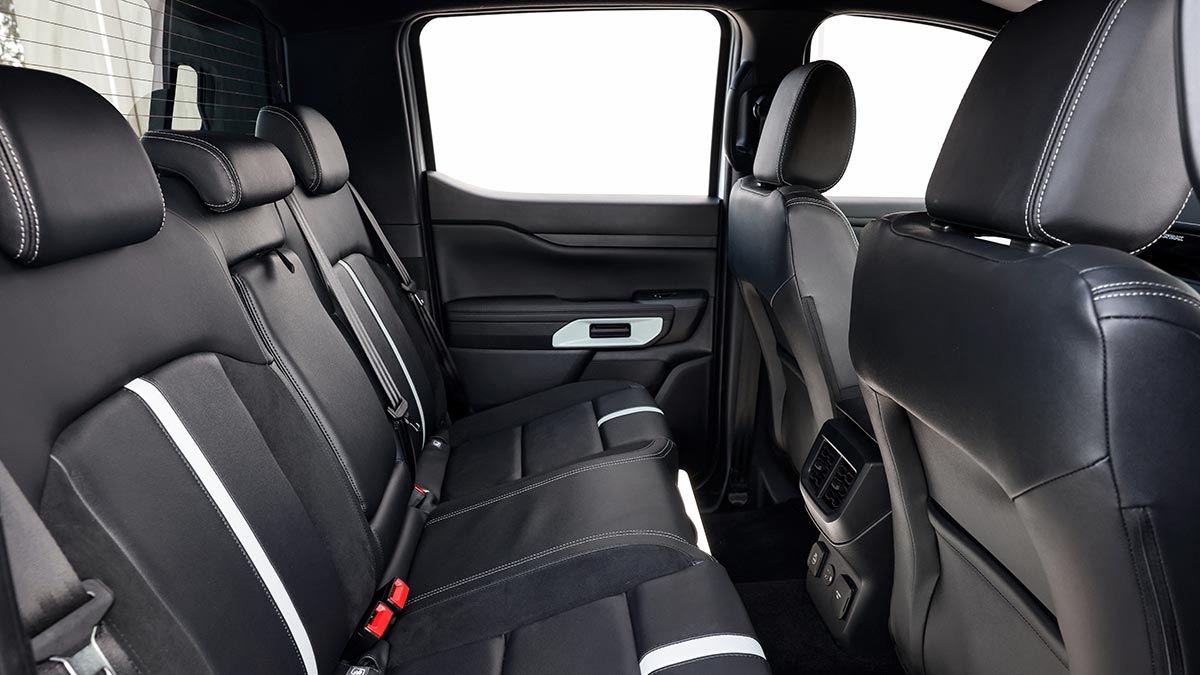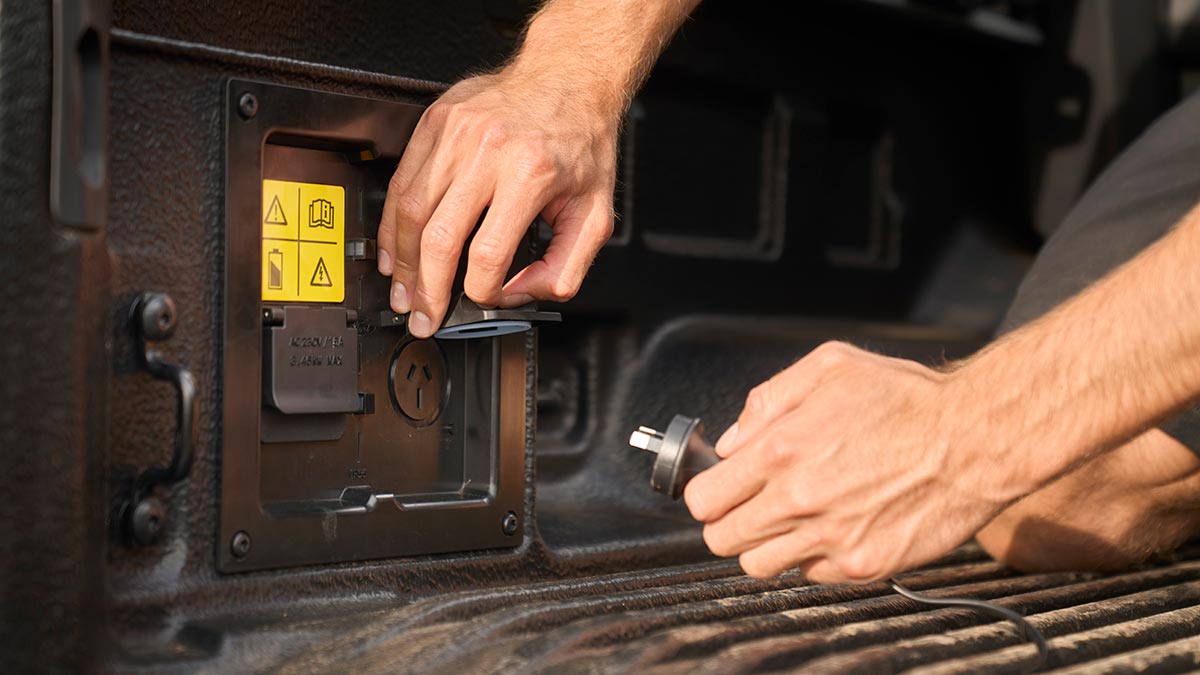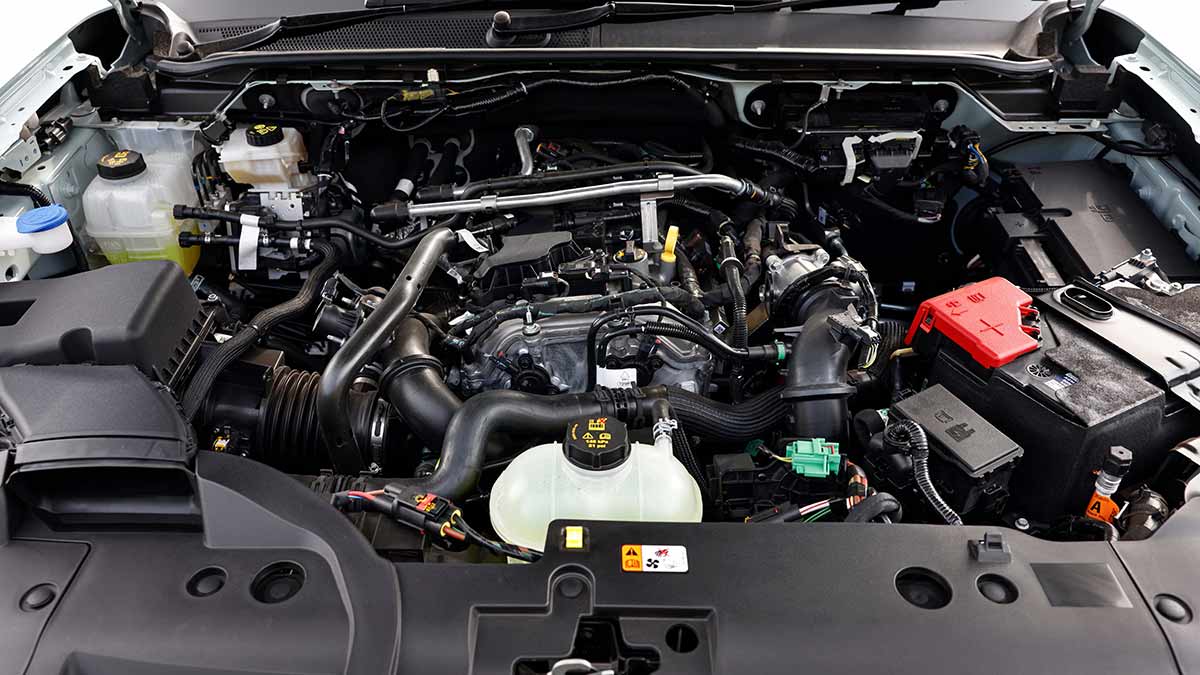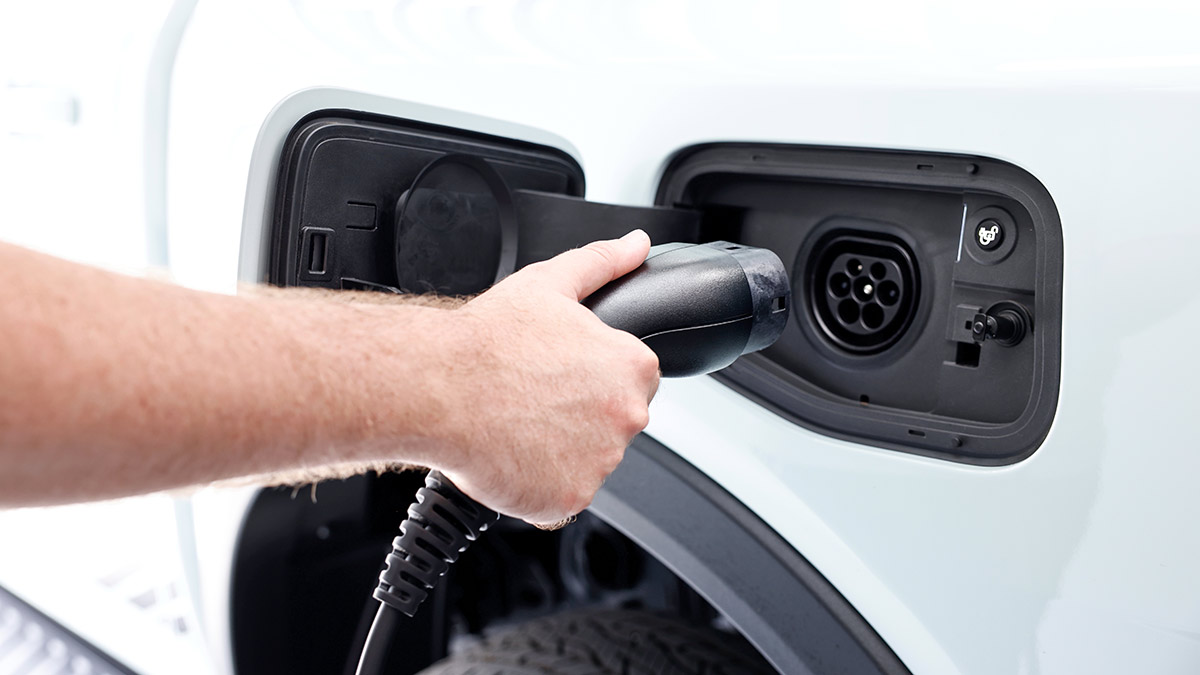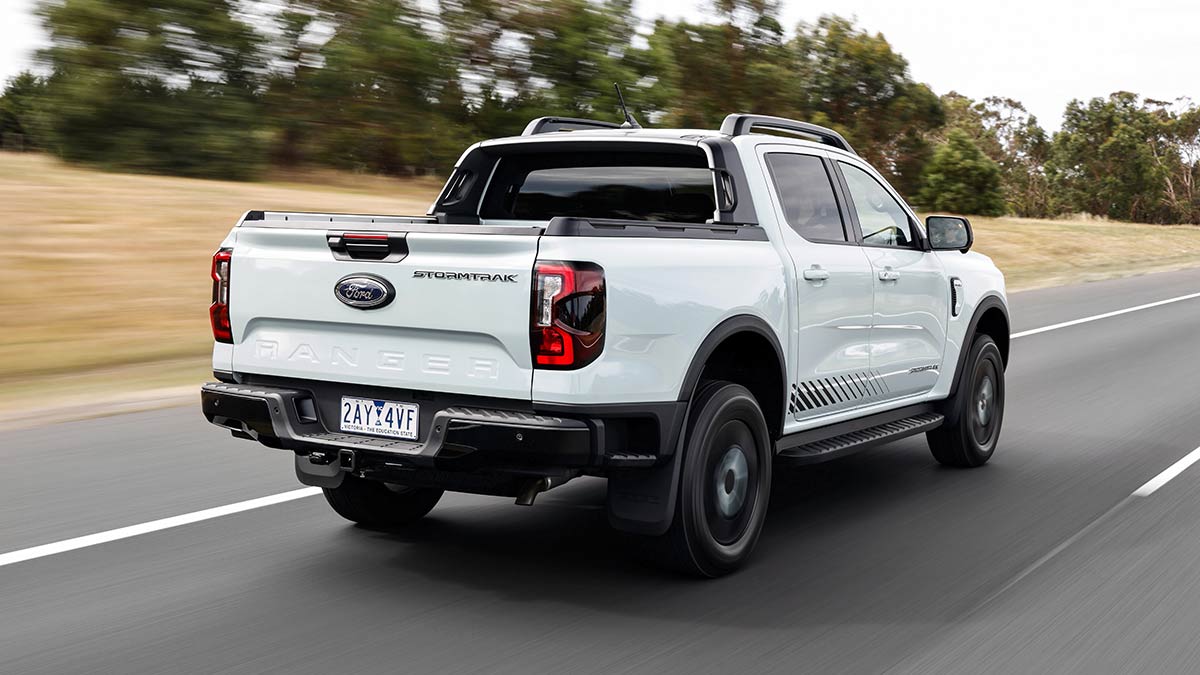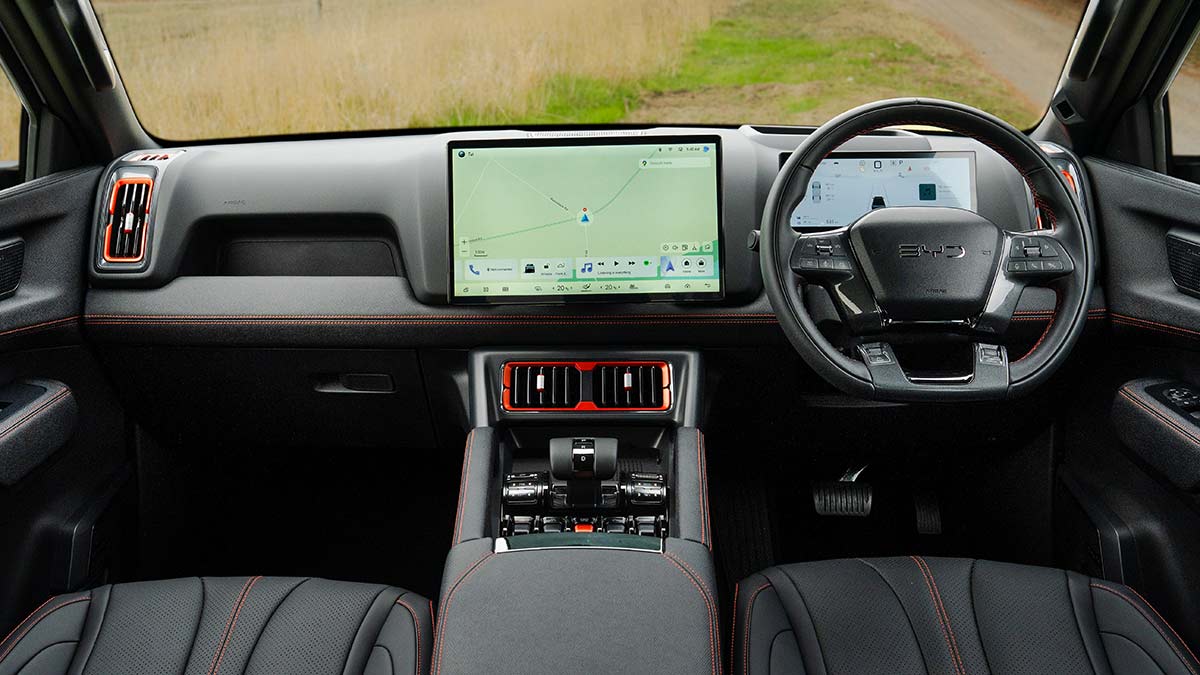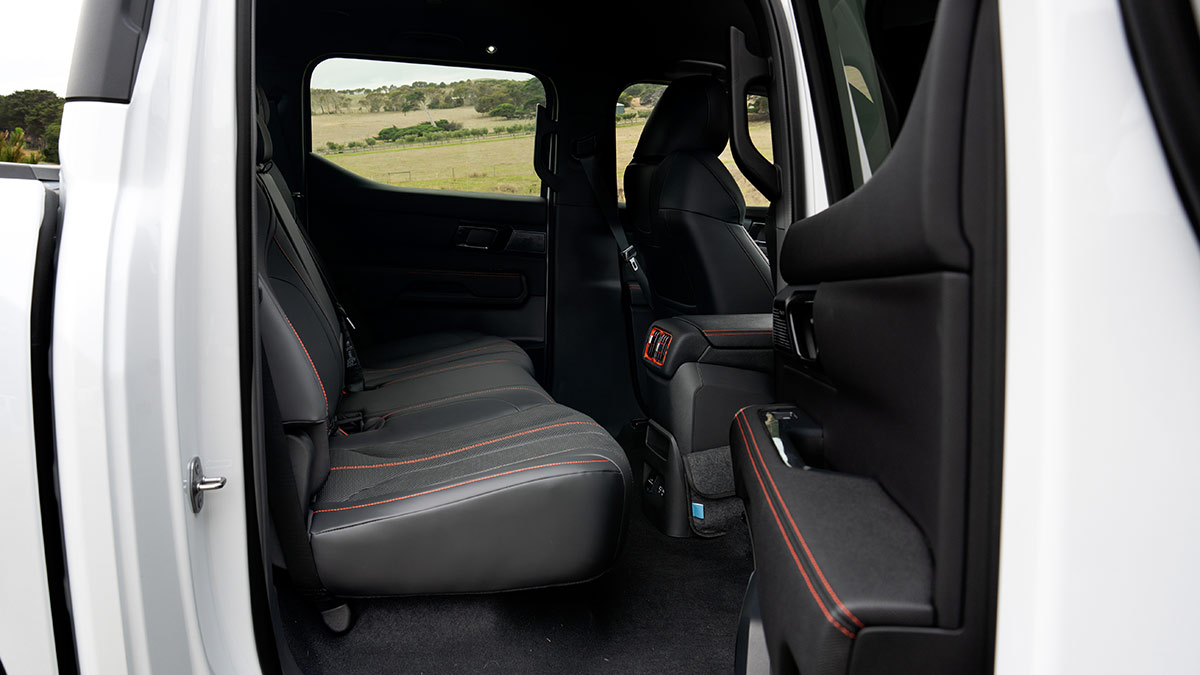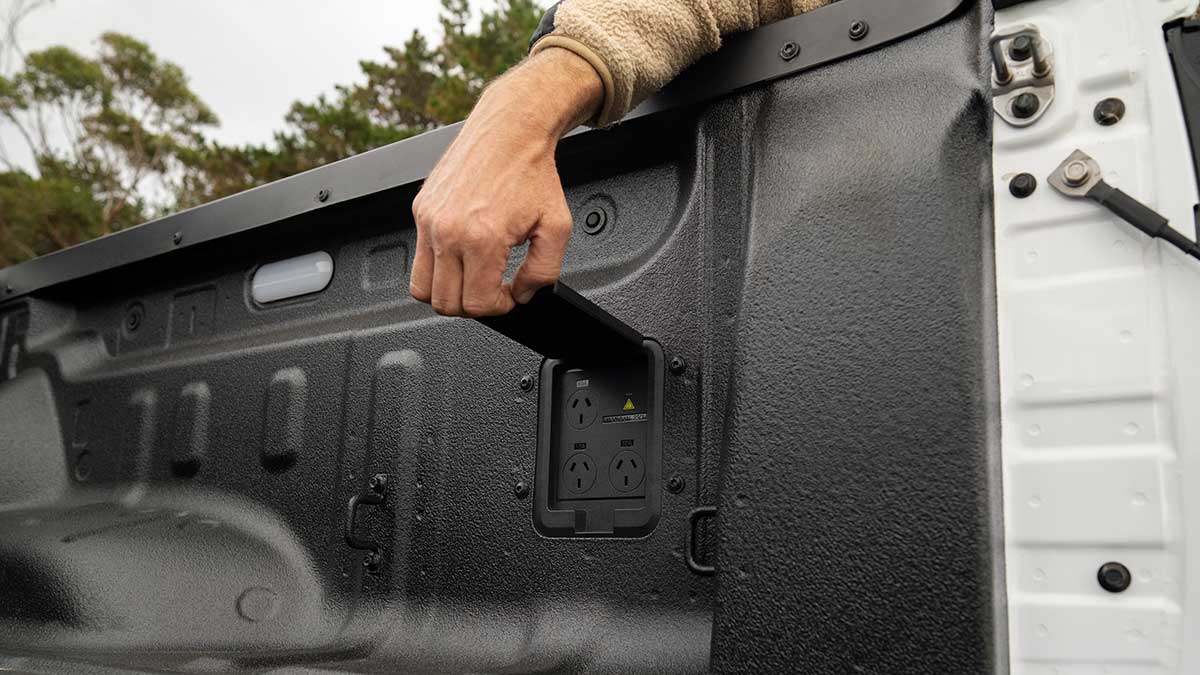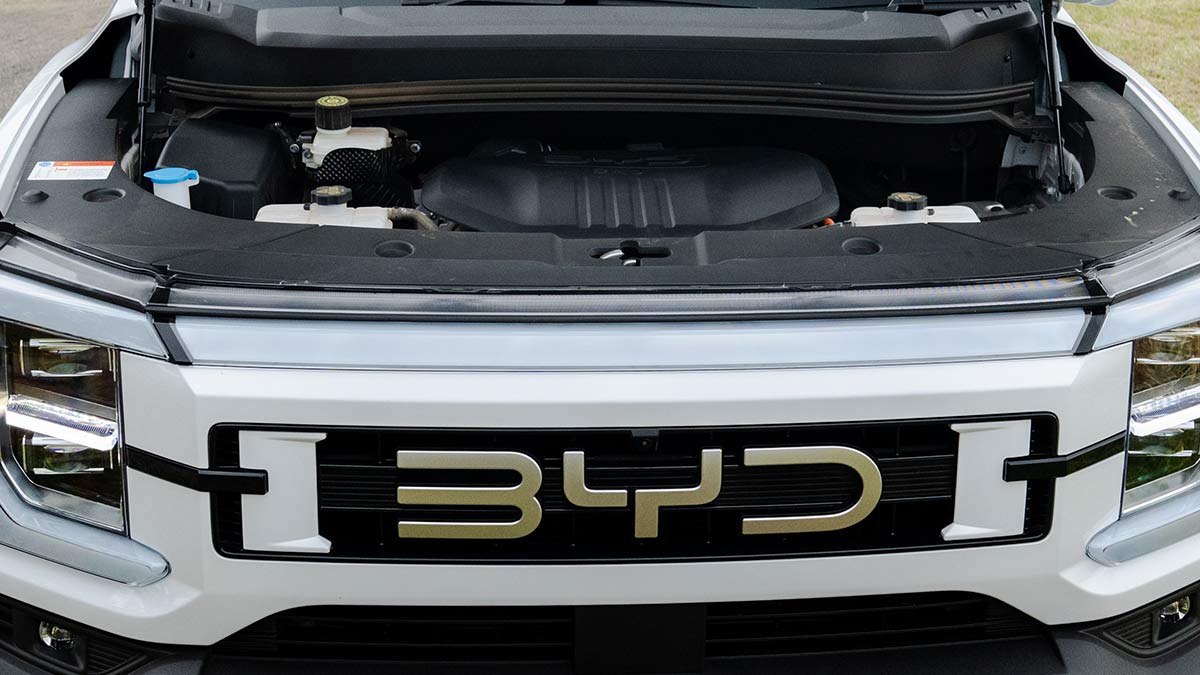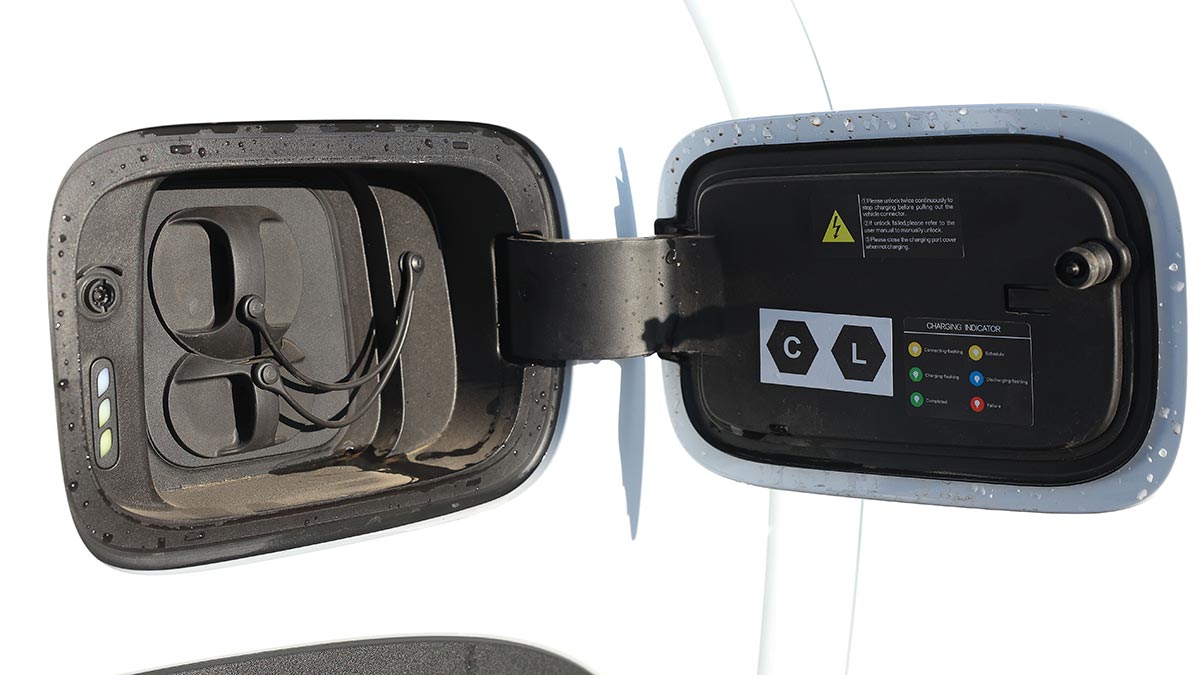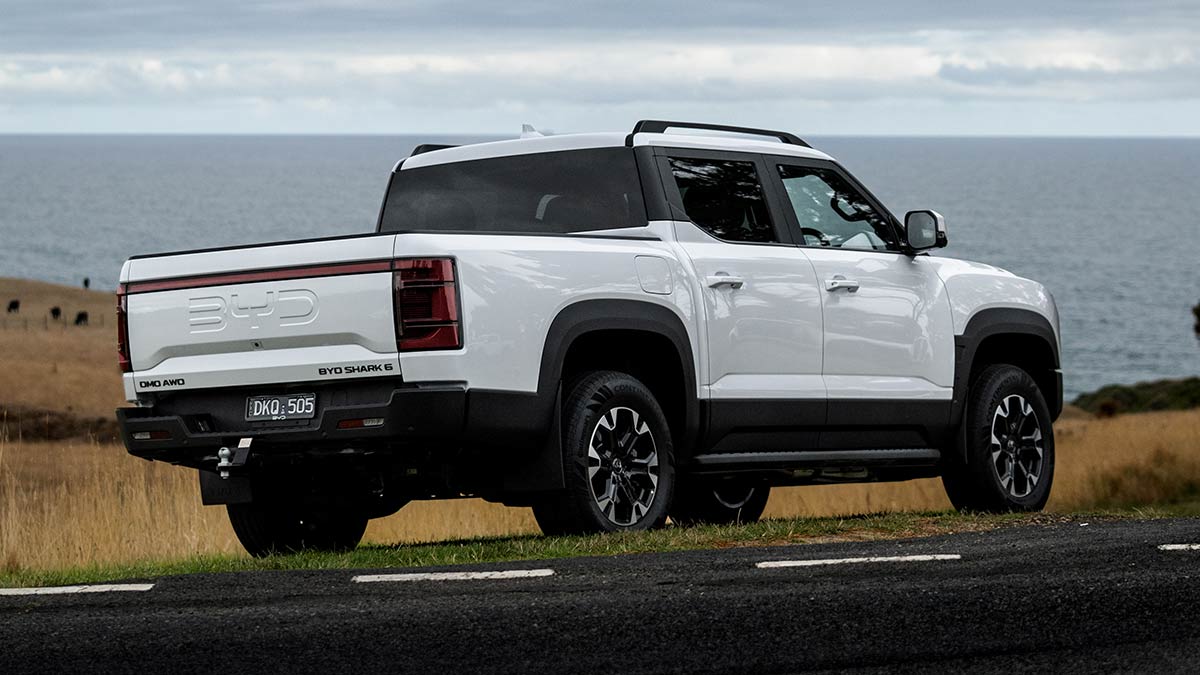Are you in the market for a new ute? From towing, work and family duties to off-road adventures, performance and value, here are the best 4x4 dual-cab utes in Australia to put on your shopping list.
2025 BYD Shark 6 vs Ford Ranger PHEV specs comparison
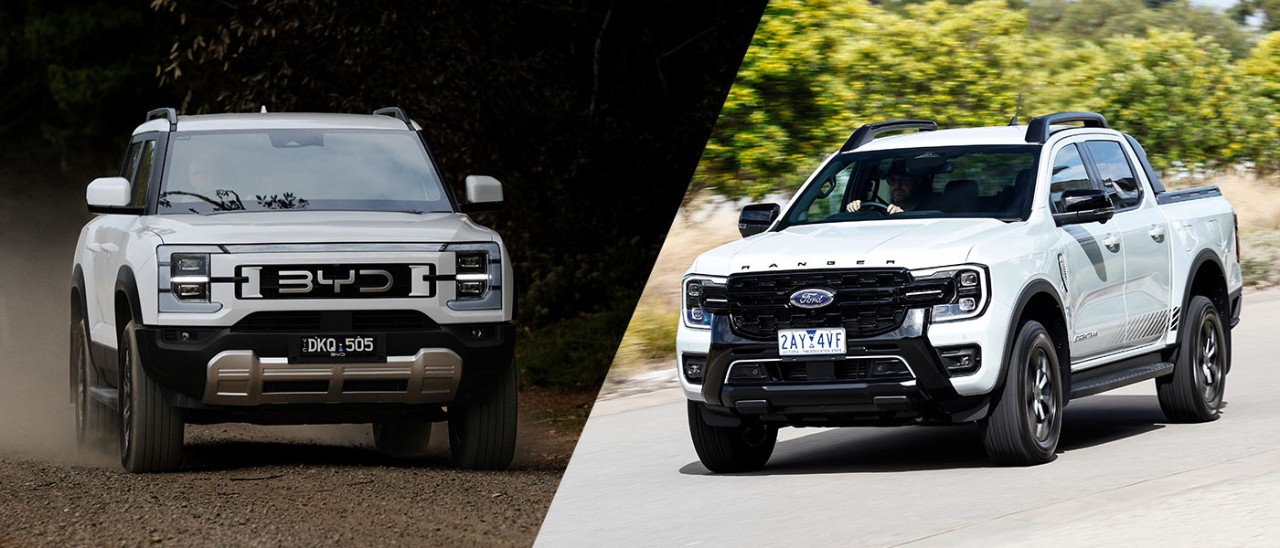
The new plug-in hybrid electric BYD Shark 6 has shaken up the dual-cab 4x4 ute segment in Australia, but how does it rate against the PHEV version of the top-selling Ford Ranger? This specs comparison has the answers for car buyers in market for an electrified ute.
The 2025 BYD Shark 6 has proven an early sales hit in Australia as the first plug-in hybrid electric vehicle (PHEV) ute on the market. But Ford is readying its electrified fightback with the 2025 Ford Ranger PHEV that hits local dealerships this year.
This PHEV version of Australia’s top-selling ute promises all the capability and load-hauling strength of any other Ford Ranger but with the ability to recharge externally and run purely on electricity for short journeys. The BYD Shark 6, meanwhile, tackles the ute challenge very differently, with an emphasis on value and electric running over outright off-road prowess.
More: Search and compare cars with price guide and data insights
BYD Shark 6 vs Ford Ranger PHEV
- Price, standard features, warranty
- Accessories – bullbars, canopies, roof racks, etc
- Vehicle to Load (V2L) capability, power points
- Size, dimensions, cabin space, rear seat room
- Payload and towing capacity
- Plug-in hybrid system, power/torque output
- EV driving range, charging times
- Off-road capability, suspension, specs
- Should I buy a BYD Shark 6 or Ford Ranger PHEV?
How much do the BYD Shark 6 and Ford Ranger PHEV cost?
For now, the 2025 BYD Shark 6 is a one-size-fits-all model known as the Premium. It features a dual-motor/all-wheel-drive powertrain with a five-seat dual-cab ute body.
The BYD Shark 6 is priced from $57,900 plus on-road costs. Standard equipment includes synthetic leather upholstery, heated and ventilated front seats (with power adjustment), a head-up display, dual-zone climate-control air-conditioning, wireless Apple CarPlay and Android Auto smartphone connectivity, front and rear parking sensors, a 360-degree camera and a plethora of other advanced driver assistance safety systems including autonomous emergency braking, blind spot warning and speed sign recognition.
There’s also remote connectivity, over-the-air software updates, the ability to use your phone as a key and, not least of all, a 10.25-inch digital instrument cluster and 15.6-inch infotainment screen.
The 2025 Ford Ranger PHEV is available in a broader model range, with XLT, Sport, Wildtrak and Stormtrak model grades available, but prices are higher. The Ranger XLT PHEV kicks off at $71,990 plus on-road costs and includes as standard 17-inch alloy wheels, dual-zone climate control, a 12.0-inch infotainment screen and an 8.0-inch digital instrument cluster.
By the time you get to the Ranger Wildtrak ($79,990 plus on-roads) you pick up 18-inch alloys, LED lights, a sports bar, wireless phone charging, partial leather seat trim, a powered driver’s seat, heating for both front seats, adaptive cruise control, speed sign recognition, ambient interior lighting, matrix LED headlights, a 360-degree camera, power roller shutter and a 10-speaker Bowers & Wilkins sound system. There’s also a zone lighting system that allows you to illuminate different areas around the car.
Priced from $86,990 plus on-road costs, the flagship Ranger Stormtrak PHEV gets styling tweaks and a flexible rack system to carry items on the roof. The Ranger also has app connectivity but it only allows you to lock and unlock the vehicle via the app.
The Shark comes standard with a full-size spare tyre, although it’s fitted to a steel wheel. The Ranger offers a matching alloy spare as a no-cost option.
The Ford Ranger PHEV is supported by a five-year/unlimited-kilometre factory warranty with a separate eight-year/160,000km warranty on the high-voltage battery pack. The BYD Shark 6 has a six-year/150,000km warranty with an eight-year/160,000km warranty on the battery.
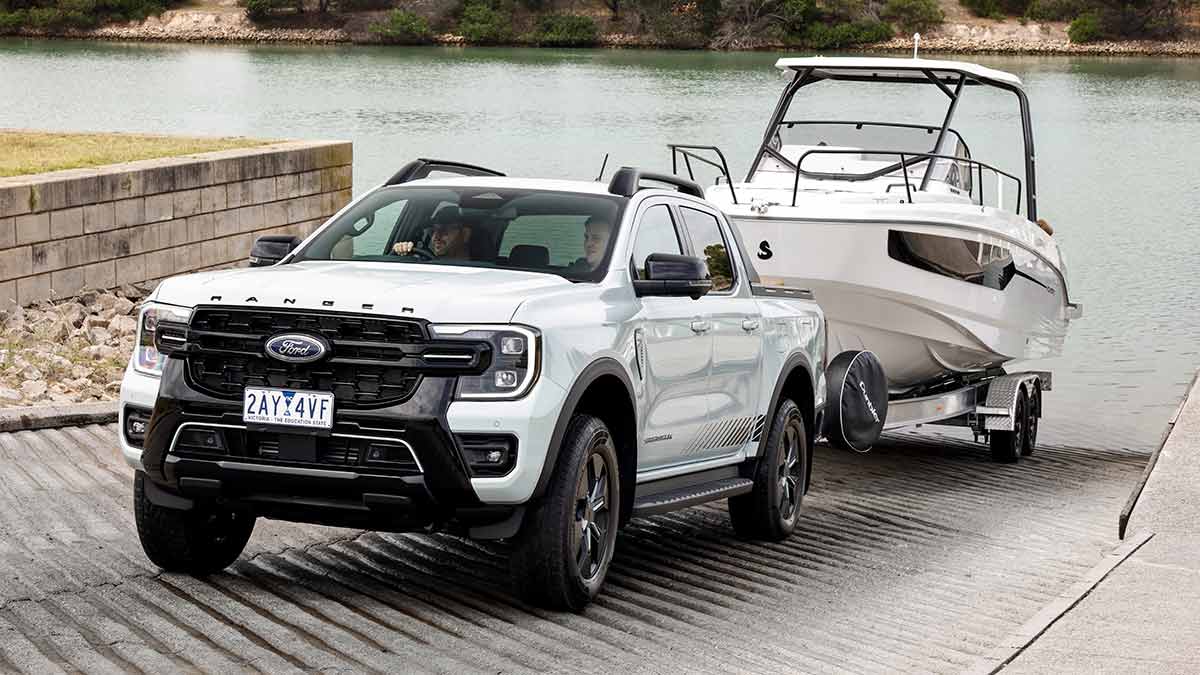
Ford Ranger PHEV has a 3500kg towing capacity, one tonne more than the BYD Shark 6.
What accessories do the BYD Shark 6 and Ford Ranger PHEV have?
Accessories are something the Blue Oval brand does really well for the Ford Ranger, and this flows through to the new PHEV model variants.
As well as bullbars, canopies, cargo covers and roof racks, the Ranger PHEV is available with integrated auxiliary switches (which are great for adding lights and other accessories), various cargo storage systems, driving lights, a long-range fuel tank and more.
BYD has a much smaller range of accessories for the Shark 6, including bullbars, a canopy, roller cover, rear sports bar and all-terrain tyres.
What can you power with the BYD Shark 6 and Ford Ranger PHEV?
The 2025 Ford Ranger PHEV and BYD Shark 6 each have a Vehicle to Load (V2L) system that utilises their respective high-voltage battery to power electrical devices such as household appliances.
With a 29.58kWh battery, the Shark 6 has the ability to keep things going longer. But even the Ranger PHEV’s 11.8kWh battery is much bigger than your average aftermarket secondary battery system typically fitted to a 4x4 ute or off-road SUV that’s set up for adventure touring.
The Shark has four 230V power outlets as part of its V2L system: three in the load area and one in the cabin. The Ranger’s so-called ‘Pro Power Onboard’ has three power outlets: two in the load area and one in the cabin.
The total power draw for the Ranger is 6.9kW and for the Shark it’s 6.6kW. It’s worth understanding the capacity of each socket when you’re considering what appliances you can use. For instance, the Ranger’s tray sockets can draw 3.45kW at 15A whereas the Cabin socket can power only 2.3kW at 10A.
How big are the BYD Shark 6 and Ford Ranger PHEV?
At 5457mm long and 1971mm wide, the 2025 BYD Shark 6 is 54mm longer and 47mm wider than the Ford Ranger PHEV. At 1925mm in overall height, the Shark 6 also stands 42mm taller than the Ranger.
The BYD Shark is a big vehicle, which is reinforced as soon as you step inside. In the back seats, in particular, the Shark 6 has impressive adult-friendly accommodation. And if you want to pop three people across the back seats, the flat floor in the Shark 6 helps the centre occupant get comfortable.
The Ford Ranger is a more traditional ute with its layout and caters for five occupants nicely.
More: Search and compare utes and tradie cars
How much can the BYD Shark 6 and Ford Ranger PHEV carry and tow?
If you want to tow heavy loads, the 2025 Ford Ranger PHEV wins this comparison test. It has a 3.5-tonne maximum braked towing capacity versus 2.5 tonnes for the BYD Shark 6.
Both utes come with a tow hitch receiver, but the Ranger PHEV is also fitted with an electronic brake controller. In the Shark you’re paying extra for the latter. The Ranger has a clever trailer light checking system, allowing the driver to check that the lights are operating properly without needing to get someone else to walk around the vehicle.
The Ranger XLT PHEV also has a payload capacity of up to 973kg, although this reduces with other more highly specified variants (808kg in the Stormtrak, for example). The Shark 6 Premium has a 790kg payload. That’s partly because the Shark comes with more standard equipment, including a full-size spare wheel; if you choose the spare for the Ranger you need to knock about 30kg off the payload.
If you’re towing 2500kg in a Shark 6 then your payload drops to 540kg. Tow that same 2.5 tonnes in the Ranger XLT PHEV and your payload is still 723kg. With 3500kg out back the Ranger XLT can take 553kg of people, luggage, accessories and gear (more expensive models have less payload).
Depending on model grade, the Ford Ranger PHEV is also available with Ford’s Pro Trailer Backup Assist, which enables easier hooking up and reversing of a trailer.
What hybrid systems do the BYD Shark 6 and Ford Ranger PHEV use?
Both the 2025 BYD Shark 6 and Ford Ranger PHEV utes have petrol engines that combine with at least one electric motor, but they do it in very different ways. In short, the BYD Shark 6 relies more on electricity, with the petrol engine mainly used as a generator. In the Ford Ranger PHEV, the petrol side of the equation provides the bulk of the grunt.
The front electric motor on the Shark 6 produces 170kW of power and 310Nm of torque, while the rear e-motor delivers 150kW/340Nm. A 1.5-litre four-cylinder turbocharged petrol engine develops 135kW/260Nm but only directly drives the vehicle above about 70-80km/h (below that it can generate electricity). That’s because there’s no traditional gearbox, with the engine able to drive only the front wheels through what is essentially a single tall gear ratio. All up, the Shark can put out 321kW and 650Nm.
The Ranger PHEV uses a 2.3-litre four-cylinder turbo-petrol engine tuned to make 138kW and 411Nm. There’s also an electric motor that develops 75kW (Ford doesn’t quote a torque figure for the e-motor). Combined, the two produce 207kW and 697Nm. The Ford uses the Ranger’s regular dual-range transfer case that allows for low-range ratios in tougher off-road terrain.
In essence, if it’s outright performance you’re chasing then the Shark 6 delivers with its 321kW of power, more than double that of most diesel-powered utes – and a fair bit more than the Ranger. But the Ranger fights back on torque, which is the thing you want in a vehicle designed to carry heavy loads.
The Shark 6 is also heavier, at a portly 2710kg. In its lightest XLT guise, the Ranger PHEV has a 2527kg kerb weight, rising to 2692kg for the Stormtrak.
More: Hybrid vs plug-in hybrid vs electric vehicle – What’s the difference?
What is the EV range of the BYD Shark 6 and Ford Ranger PHEV?
Of course, the big appeal with both the BYD Shark 6 and the Ford Ranger PHEV is their ability to be recharged externally or via the engine, and run purely on electricity.
The BYD Shark 6 has a 29.58kWh battery that is claimed to provide up to 100km of driving range, according to the NEDC test cycle. In the real world, this is more like 70-80km. The Ranger PHEV’s battery is much smaller at 11.8kWh. It’s no surprise, then, that its EV range is shorter at 49km (also according to the NEDC cycle).
For recharging, the Shark 6 can accept an AC charge up to 7kW or a DC charge up to 55kW, the latter available at faster public charging stations. BYD claims the Shark takes about 45 minutes for a full charge. The Ranger, meanwhile, can accept only 3.5kW of AC charge. That means the Shark can charge in more places, especially when you’re on the road.
However, at home a full charge in the Shark would take about five hours using a standard 7kW AC charging system, while the Ranger is a fraction quicker. If you’re using a standard power point (nominally 230V AC), the Shark would take about 15 hours and the Ranger less than seven.
More: How to charge an electric car at home and how long it can take
How good are the BYD Shark 6 and Ford Ranger PHEV off-road?
The 2025 BYD Shark 6 is very different to your average ute beneath the skin. Whereas most utes – the Ford Ranger included – get a live rear axle with leaf springs, the BYD has independent suspension and coil springs at both the front and rear axle.
That set-up has been chosen to enhance on-road manners. It’s not all good news, though, because independent suspension systems typically doesn’t have the wheel travel of a live axle set-up.
Ford says the Ranger PHEV will have all the capability of any other Ranger, ensuring it can deal with very challenging terrain. All Ranger model grades feature a locking rear differential to maximise traction. The Shark, meanwhile, relies more on electronics to apportion drive.
As for other off-road statistics, the Shark has 230mm of ground clearance versus 215mm for the Ranger XLT, 228mm for the Sport and 226mm for Wildtrak and Stormtrak. The Shark’s 31-degree approach angle beats the Ranger, which is between 28.9 and 30.2 degrees, depending on the model variant. But the Ranger wins on the departure angle: up to 24.7 degrees versus 19.3 degrees for the Shark.
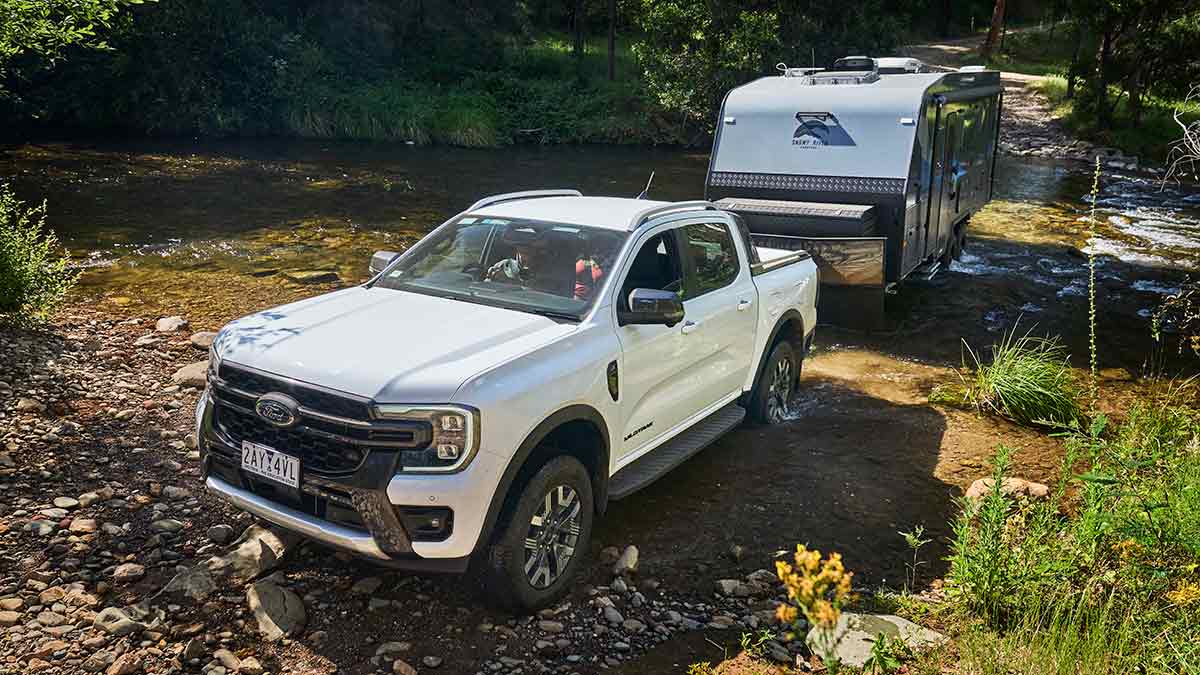
Ford Ranger PHEV is hard to beat if towing and off-road ability are key considerations.
Should I buy a BYD Shark 6 or Ford Ranger PHEV?
There will be some ute buyers who need the higher towing capacity and additional off-road hardware of the 2025 Ford Ranger PHEV. On the other hand, the BYD Shark 6 packs in more standard equipment and technology in a stylish and roomy dual-cab ute body.
With a significant price difference, the BYD Shark 6 is likely offer broader appeal for lifestyle buyers looking for a practical and more affordable option, but the Ranger’s flexibility may represent a better option for tradies or caravanners.
BYD Shark 6 Premium price and specs
Price: From $57,900 plus on-road costs
Basics: PHEV, 5 seats, 4 doors, ute, AWD
EV range: 100km (NEDC test cycle)
Battery capacity: 29.58kWh
Battery warranty: 8 years/160,000km
E-motors: 1 front and 1 rear
Combined output: 321kW/650Nm
AC charging: 7kW, Type 2 plug
DC charging: 55kW, CCS combo plug
0-100km/h: 5.7 seconds
Payload/towing capacity: 790kg/2500kg
Ford Ranger XLT PHEV price and specs
Price: From $71,990 plus on-road costs
Basics: PHEV, 5 seats, 4 doors, ute, AWD
EV range: 49km (NEDC test cycle)
Battery capacity: 11.8kWh
Battery warranty: 8 years/160,000km
E-motors: 1 mounted between the engine and 10-speed auto transmission
Combined output: 207kW/697Nm
AC charging: 3.5kW, Type 2 plug
DC charging: Not available
0-100km/h: Figure not provided
Payload/towing capacity: 973kg/3500kg
The information provided is general advice only. Before making any decisions please consider your own circumstances and the Product Disclosure Statement and Target Market Determinations. For copies, visit racv.com.au. As distributor, RACV Insurance Services Pty Ltd AFS Licence No. 230039 receives commission for each policy sold or renewed. Product(s) issued by Insurance Manufacturers of Australia Pty Ltd ABN 93 004 208 084 AFS Licence No. 227678.

